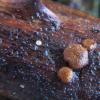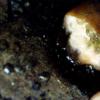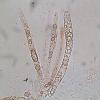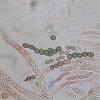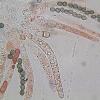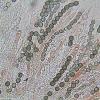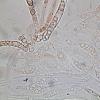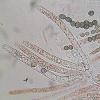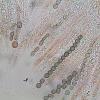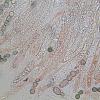
02-01-2018 19:08
 Blasco Rafael
Blasco Rafael
Hola tengo esta Hypocrea que creo sea Hypocrea ruf

03-01-2018 01:27
Valencia Lopez Francisco JavierHola a todos/asTengo estas Cheilymenia recolectada

02-01-2018 21:44
 Rubén Martínez-Gil
Rubén Martínez-Gil
Hola a todos. Subo unas fotos de un asco que hemo

01-01-2018 20:33
Hello and best wishes,Does anybody has : "Castella

02-01-2018 20:04
 Blasco Rafael
Blasco Rafael
Hola tengo recogida esta muestra que no se a que g

25-12-2017 01:06
 Pérez del Amo Carlos Manuel
Pérez del Amo Carlos Manuel
Pongo esta Otidea que encontramos hace dos semanas

25-12-2017 19:00
 Fedorenko Vassiliy
Fedorenko Vassiliy
Hello everyone!Please help me to confirm this fung

01-01-2018 16:39
Sur crottes de lapin en culture, provenant d'ancie

01-01-2018 17:51
 Bernard CLESSE
Bernard CLESSE
Trouvé récemment dans un creux de branche pourri
Hypocrea en Rubus fructicosus
Blasco Rafael,
02-01-2018 19:08
 Hola tengo esta Hypocrea que creo sea Hypocrea rufa, fue recogida sobre rama cortada de Rubus fructicosus, no encuentro nada que la cite sobre este sustrato, no se si puede ser otra especie.
Hola tengo esta Hypocrea que creo sea Hypocrea rufa, fue recogida sobre rama cortada de Rubus fructicosus, no encuentro nada que la cite sobre este sustrato, no se si puede ser otra especie.Diametro , la mas grande sobre 4 mm,
Esporas separadas 4 x 5---4 x 5,5---5 x 6---4,5 x 6
Ascas 90 x 6---100 x 5---105 x 6
Un saludo
Rfael
Chris Yeates,
03-01-2018 22:49

Re : Hypocrea en Rubus fructicosus
Hola Rafael
have you seeN https://www.ncbi.nlm.nih.gov/pmc/articles/PMC3189789/ ? It can be freely downloaded as a PDF from there. Walter Jaklitsch points out that Hypocrea rufa is often misidentified for other closely-related species.
I myself have found a similar fungus on Rubus idaeus but have struggled to get mature spores. I find this group quite difficult . . .
Saludos
Chris
have you seeN https://www.ncbi.nlm.nih.gov/pmc/articles/PMC3189789/ ? It can be freely downloaded as a PDF from there. Walter Jaklitsch points out that Hypocrea rufa is often misidentified for other closely-related species.
I myself have found a similar fungus on Rubus idaeus but have struggled to get mature spores. I find this group quite difficult . . .
Saludos
Chris
Hermann Voglmayr,
04-01-2018 01:34
Re : Hypocrea en Rubus fructicosus
Your species has green spores, so it definitely can't be H. rufa (now Trichoderma viride).
So you should have a look at the green-spored monograph in Studies in mycology https://www.ncbi.nlm.nih.gov/pmc/articles/PMC2757427/ . However, most species can't be reliably identified without cultures and sequences.
Saludos, Hermann
So you should have a look at the green-spored monograph in Studies in mycology https://www.ncbi.nlm.nih.gov/pmc/articles/PMC2757427/ . However, most species can't be reliably identified without cultures and sequences.
Saludos, Hermann
Blasco Rafael,
04-01-2018 08:59

Re : Hypocrea en Rubus fructicosus
Gracias Chris y Hermann
Veo que hay bastantes especies parecidas y complicadas, la dejare como Hypocrea sp por su alguna vez se quiere secuenciar
Rafael
Veo que hay bastantes especies parecidas y complicadas, la dejare como Hypocrea sp por su alguna vez se quiere secuenciar
Rafael

